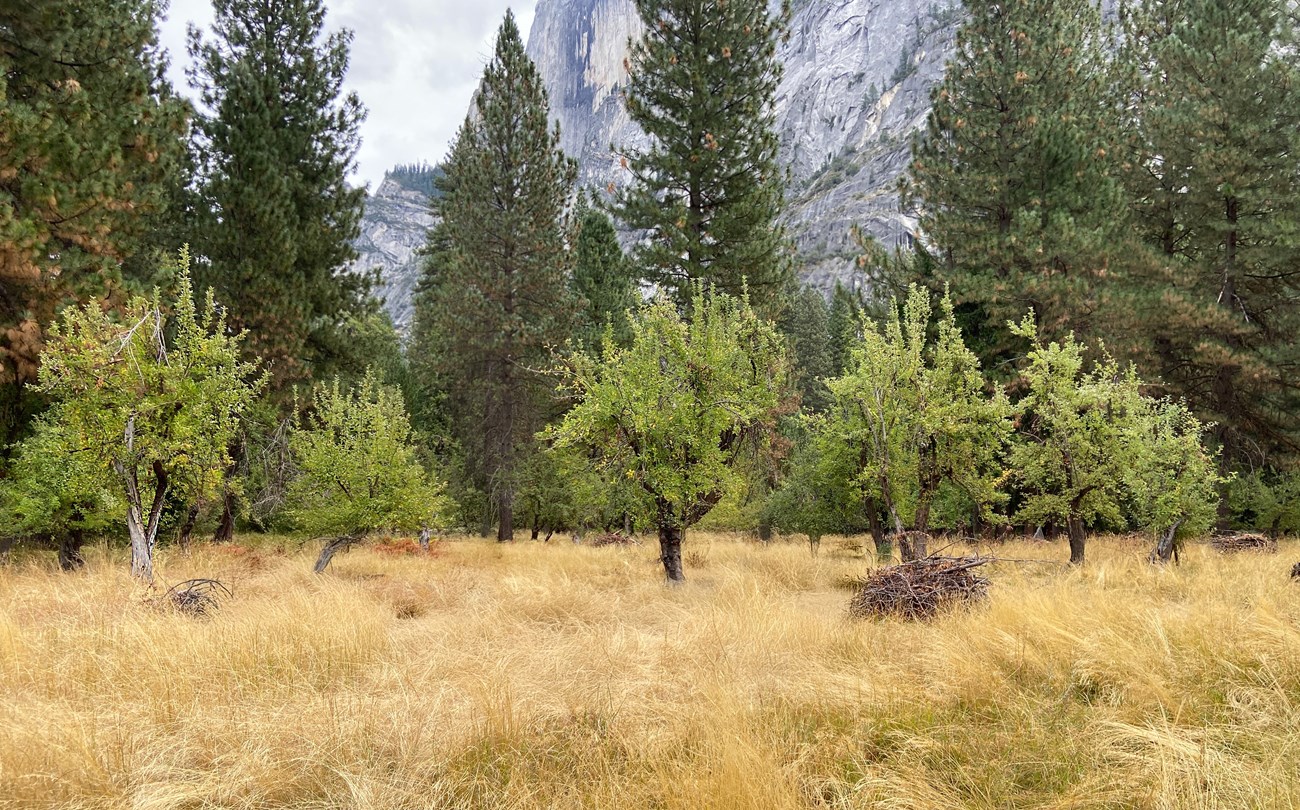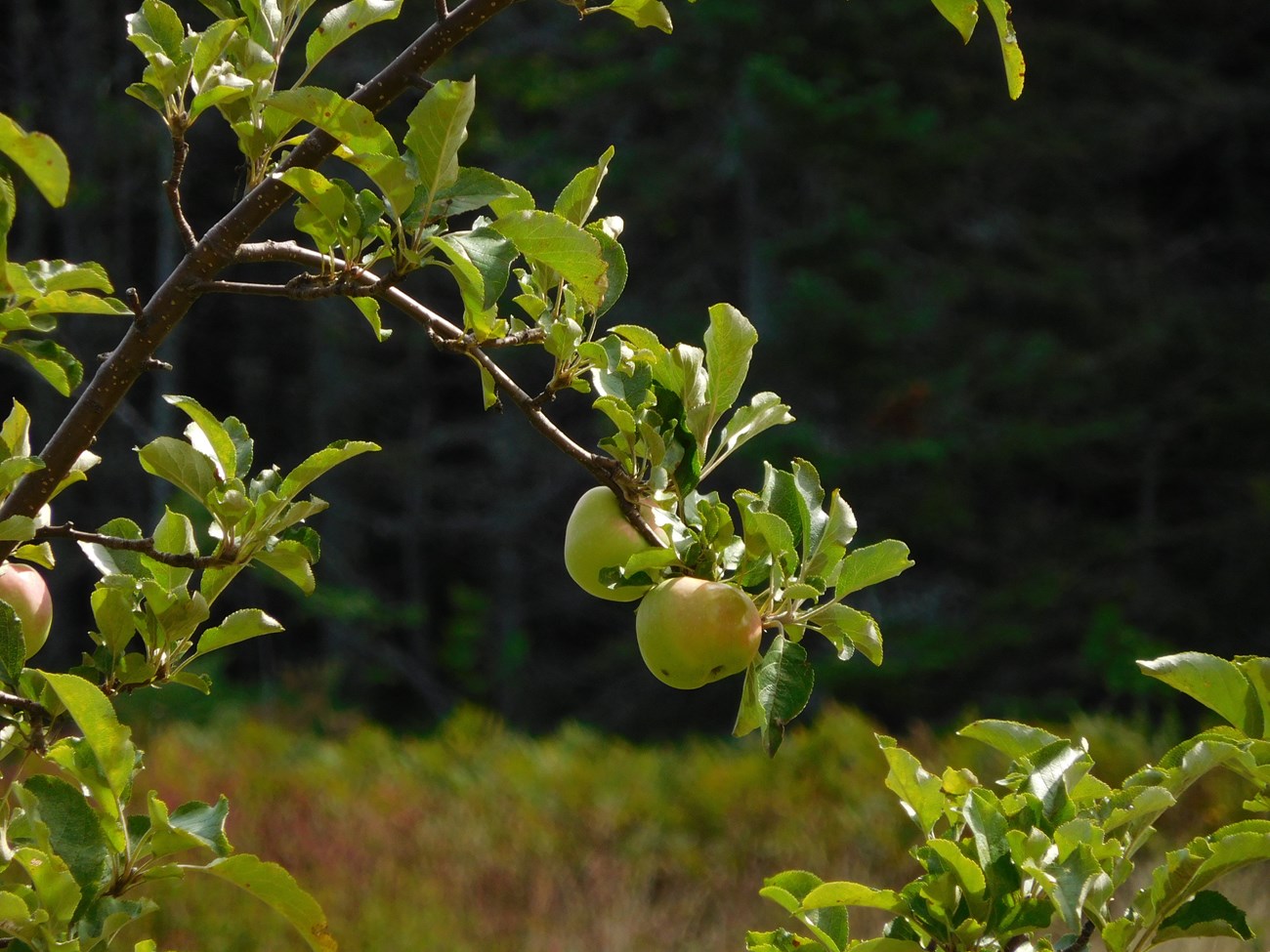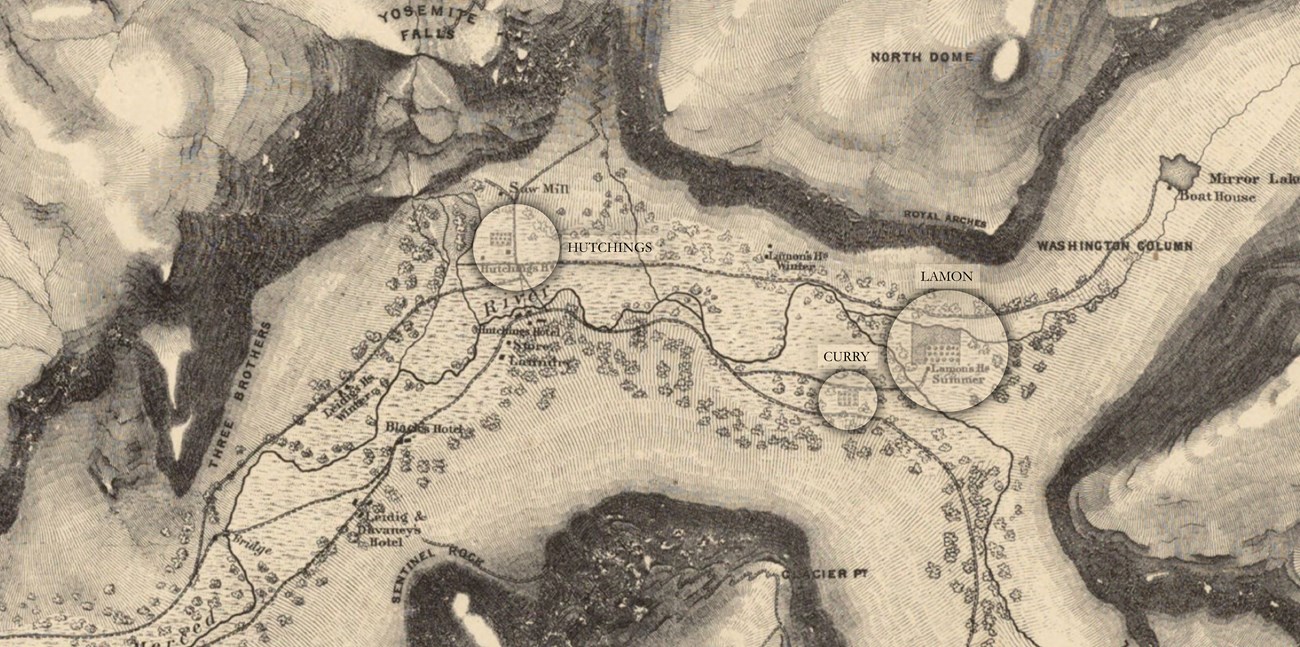Last updated: December 19, 2024
Article
Historic Orchards in Yosemite National Park

NPS Archives
Each Orchard Tells a Story
Yosemite National Park has several historic orchards that shed light on the transitional period of homesteading and public land conservation that occurred in the mid-to-late 1800s in California. Composed primarily of apple trees, these orchards are substantial living remnants of European-American settlement in the area that would become the national park.
Yosemite National Park has long been the homeland of indigenous people who actively manage and cultivate black oak woodlands to collect acorns as an important and culturally significant food source. The attempted forced removal of the indigenous inhabitants by the Mariposa Battalion in 1851, followed by a US Army expedition in 1852, preceded a wave of homesteading in Yosemite Valley over the next decade. Land settlement laws (Pre-emption Act of 1841 and Homestead Act of 1862) enabled former miners with limited savings to develop farms and ranches on small acreages. As a condition of the laws, settlers needed to demonstrate land improvements. Settlers planted orchards both for the fruit and to demonstrate cultivation of the land.
Yosemite National Park has several historic orchards that shed light on the transitional period of homesteading and public land conservation that occurred in the mid-to-late 1800s in California. Composed primarily of apple trees, these orchards are substantial living remnants of European-American settlement in the area that would become the national park.
Yosemite National Park has long been the homeland of indigenous people who actively manage and cultivate black oak woodlands to collect acorns as an important and culturally significant food source. The attempted forced removal of the indigenous inhabitants by the Mariposa Battalion in 1851, followed by a US Army expedition in 1852, preceded a wave of homesteading in Yosemite Valley over the next decade. Land settlement laws (Pre-emption Act of 1841 and Homestead Act of 1862) enabled former miners with limited savings to develop farms and ranches on small acreages. As a condition of the laws, settlers needed to demonstrate land improvements. Settlers planted orchards both for the fruit and to demonstrate cultivation of the land.

NPS
The original orchards remain to this day and provide a rich collection of human and horticultural history:
- The history of Curry Orchard intersects with the introduction of automobiles to the park and the expansion of concessionaire operations.
- Galen Clark and Washburn Orchards mark the earliest days of development in the Wawona area.
- Hutchings Orchard ties back to the initial promotion of Yosemite Valley as a tourist destination.
- Lamon Orchard is the largest post-goldrush orchard remaining in California.
- Meyer Orchard is a living link to a time when homesteads and ranches were anchored by orchards.

Boston Public Library Archives
Learn About Each Orchard
-
 Curry Orchard
Curry OrchardAn orchard turned parking lot from 1860.
-
 Galen Clark and Washburn Orchards
Galen Clark and Washburn OrchardsTwo historic orchards in the Wawona historic district.
-
 Hutchings Orchard
Hutchings OrchardA historic orchard near the base of Yosemite Falls.
-
 Lamon Orchard
Lamon OrchardThe oldest and largest orchard from 1859.
-
 Meyer Orchard
Meyer OrchardA ranch orchard from the 1870s.
